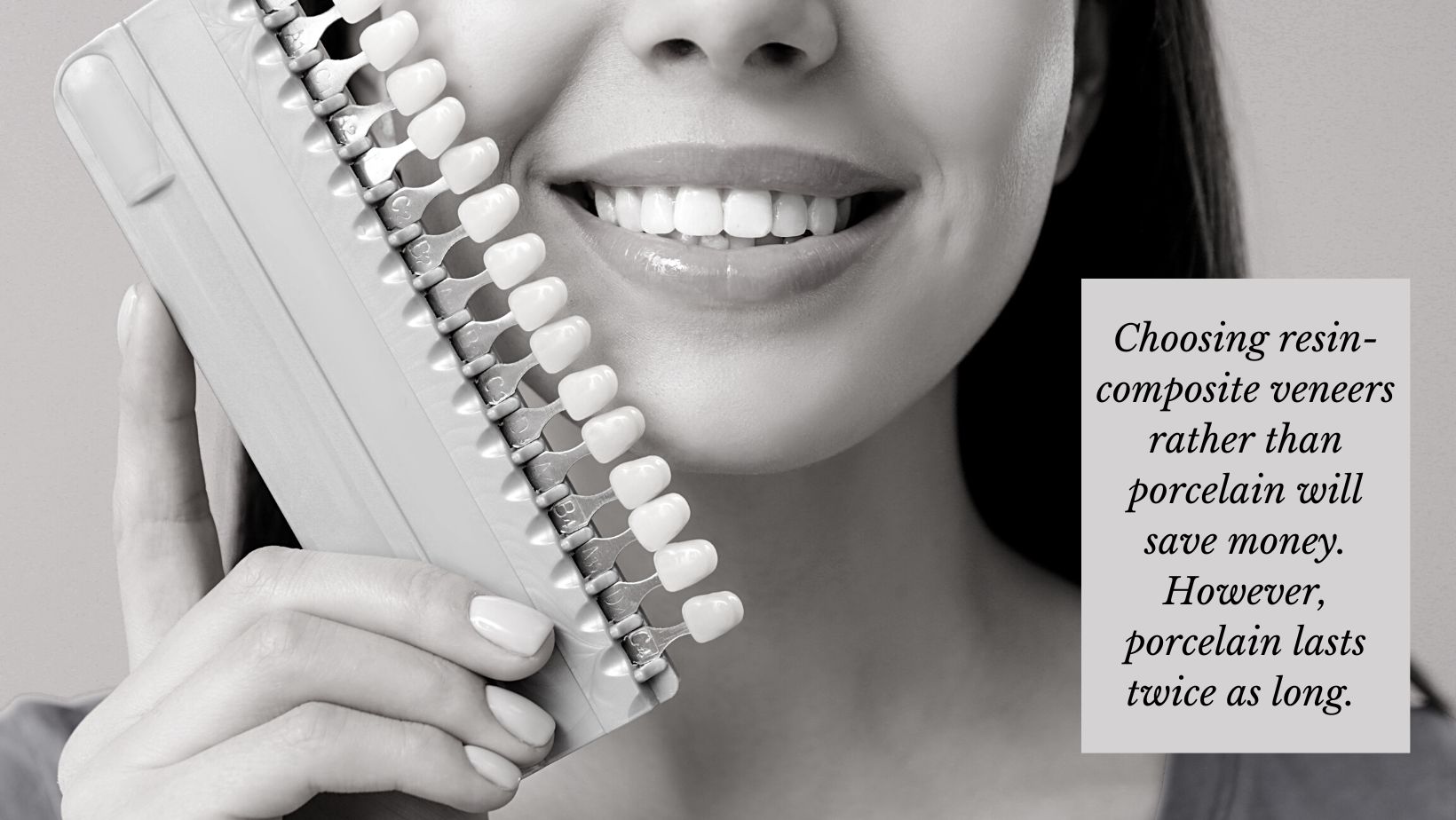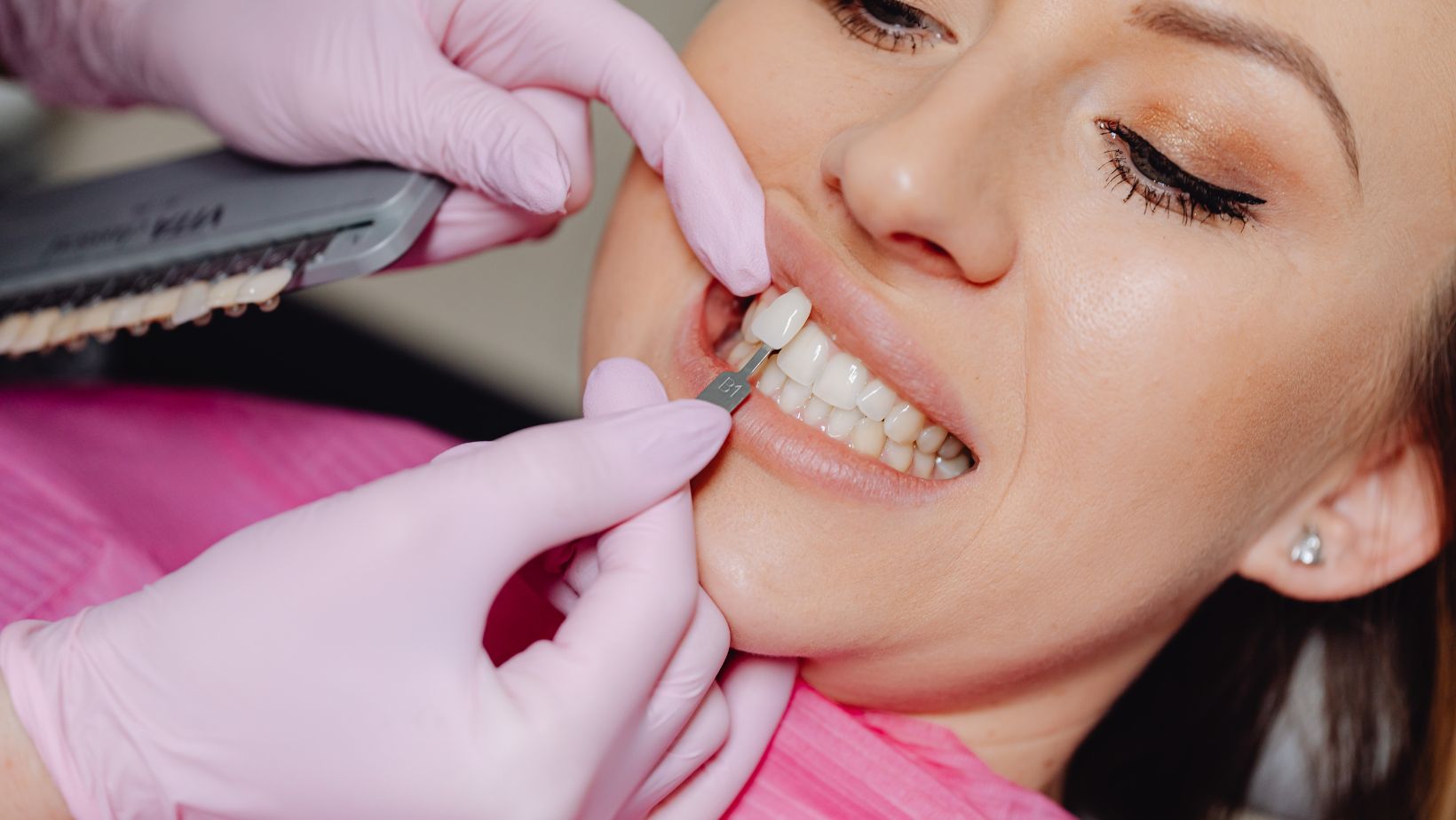A beautiful smile can be yours, but it often comes with a hefty price tag. If you have dental insurance, it’s natural to wonder if cosmetic dental work like veneers is covered. Unfortunately, in most cases, the answer is “no.” But before giving up on the idea, it’s worth exploring the exceptions to that rule, as well as some ways to reduce the cost of veneers.
Why You Might Consider Veneers
In the same way a false fingernail covers up a natural nail, a veneer is a false tooth surface. Made to look and feel like real teeth, veneers are made of thin (only about 1 millimeter thick) pieces of porcelain or resin-composite.
Unlike a crown which caps an entire tooth, veneers are applied only to the front-facing part of the tooth. And, while crowns are used to restore teeth, often after a root canal procedure, veneers’ purpose is usually aesthetic. Veneers will cover up discoloration, even out irregularly shaped teeth, close gaps, or disguise chips, cracks, and broken teeth. Depending on the reason, a veneer can be placed on several teeth or just one.
Getting veneers takes at least three different appointments. First, the dentist takes x-rays, photos, and impressions of the teeth. If the patient has any cavities or other issues, they need to be dealt with before the veneer process goes any further.
At the next appointment, the dentist prepares the tooth by grinding away some of the surface enamel. This gives the tooth the proper texture to affix the veneer. After this procedure, the patient is sent home with temporary veneers so they will be able to eat and drink.
After about two weeks, the permanent veneers, which have been created in a lab, are attached using bonding cement. Resin-composite veneers will last around 5 years. Those made of porcelain can last more than 10 years.
The Price of Perfect Teeth
Covering up imperfections with veneers can cost quite a bit. Resin-composite, which is the same material used for dental fillings, costs about $400 to $1,500 per tooth. Porcelain is more expensive at $925 to $2,500 per tooth. In large metropolitan areas where the cost of living is high, the prices can be even higher than these averages.
It is also important to remember that these prices are for the veneers only. If a patient has cavities or needs other dental work prior to getting started, that will be an extra expense. Depending on the dentist, it may cost extra for an initial consultation and x-rays too.
Dental Insurance for Veneers and Other Cosmetic Dentistry
Dental insurance policies distinguish between cosmetics and restoration. Procedures that are cosmetic are considered elective, so veneers, teeth whitening, and even dental implants may not be covered.
If a procedure is medically necessary, insurance is more likely to pay. Depending on the situation, restorative dentistry might meet that requirement. For example, a dental implant that replaces teeth knocked out in an accident could be considered medically necessary. So might a veneer that corrects a damaged tooth.
Patients need to check their benefits to see if they have coverage. Also, discuss the proposed treatment with the dentist to see if there is an underlying medical purpose for the dental work. If the procedure is planned only to improve how the teeth look, it is almost certain that a claim would be denied. If, on the other hand, a veneer has a dental health benefit, insurance might pay a portion of the bill. For example, a veneer that covers the jagged edge of a broken tooth or corrects a malocclusion by fixing a small or pointed tooth might be deemed a necessary restoration.
Believe it or not, replacing veneers is often more likely to be covered by insurance than their original placement. Because of the removal of some tooth enamel, once someone has veneers, they have them for life. They do not last forever, so when it is time for them to be replaced, doing so is necessary for the patient’s health. Underneath the veneer, the tooth is unprotected and possibly unstable.
Some insurance policies allow for the addition of benefits if the insured is willing to pay a higher premium. It may be possible to add on coverage for cosmetic procedures, orthodontia, and even teeth whitening. The best thing to do is review your policy or contact your benefits administrator to find out which procedures can be covered and at what percentage of the total cost.

Reducing the Cost of Veneers
There are some ways to lower the cost of veneers if you do not have insurance, or if your dental insurance does not cover the procedure.
Material. Choosing resin-composite veneers rather than porcelain will save money. However, porcelain lasts twice as long. Your dentist may be able to steer you to the best value based on your dental history. For example, someone who grinds their teeth may benefit from porcelain, as it will withstand more wear and tear.
Visibility. Veneers are rarely put on molars because no one sees them. If your veneers are purely cosmetic, consider only getting them on the most visible of your teeth. Many people skip them on their bottom teeth and only do the front six or eight on top. It all depends on what imperfections you want to cover and what people see in your unique smile.
Timing. Even though insurance might not pay for veneers, it will most likely cover some of the cost of exams, x-rays, and fillings. But most policies have waiting periods so there is at least 6 months between appointments. It might be necessary to put off getting veneers for a few months so you can take advantage of your benefits for the exam and any preliminary dental work.
Travel. Since the cost of living can affect the cost of dental work, you may be able to find less expensive veneers in another city, state, or even country. People who are willing to travel can get great deals on all kinds of elective dental procedures not covered by insurance.
Traveling to get Veneers
Traveling for veneers is becoming a growing trend. You can take advantage of the much lower prices of providers in other parts of the country and internationally. It’s the perfect solution when dental insurance won’t cover veneers.
The Dental Health Society can help you find qualified cosmetic dentists who will do your veneers for less. While you get your procedure, you can take a trip and enjoy a new destination, or choose a city where you can visit with friends and family.
To start exploring the possibility of traveling for veneers, implants, or any cosmetic procedure, just fill out our online search tool and we’ll do the rest.


